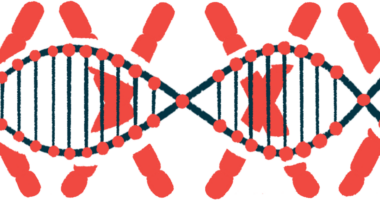Lack of Dystrophin May Lead to Heart Failure in Duchenne MD Patients, Study Finds
by |

Heart complications in patients with Duchenne muscular dystrophy (DMD) are associated with shortening of telomeres, the protective DNA sequences at the ends of chromosomes, resulting from the lack of dystrophin (the hallmark of DMD), according to a new study.
The study, “Telomere Shortening And Metabolic Compromise Underlie Dystrophic Cardiomyopathy,” was published in the journal PNAS.
Duchenne MD is characterized by a loss of muscular function, including in the heart and lungs, due to the presence of mutations in the gene encoding the dystrophin protein. In fact, mortality rates are frequently associated with cardiopulmonary failure due to cardiomyopathy (diseases of the heart muscle).
Although electrocardiography can detect heart problems in more than half of DMD patients ages 6 to 10, the early symptoms of cardiomyopathy may remain undetected.
DMD research has sometimes relied on mice carrying mutations in the dystrophin gene, similar to those observed in human patients. But in mice, a lack of dystrophin induces only a milder form of DMD, and no signs of cardiomyopathy associated with the human form of the disease are observed.
It is now known that the size of telomeres, the structures protecting the ends of the chromosomes, also play a role in Duchenne MD. Because mice have naturally longer telomeres than humans, they may be protected from cardiomyopathy in DMD.
To test this hypothesis, researchers created mice with a lack of dystrophin and with “humanized” telomere length. As predicted, these animals fully manifest both the severe human muscular loss and cardiac failure typical of DMD. The team also found that in these mice, shortening of the telomeres in cardiac cells occurred after birth, even when the heart was fully formed and cells were no longer dividing (cell division may affect the size of the telomeres).
The team also observed that in cardiac cells, chronic shortening, together with the activation of the p53 protein (which activates processes of DNA damage), resulted in reduced energy production. This, in conjunction with the high demands of muscle contraction, led to increased levels of oxidant molecules and cell damage, thereby affecting the activity of the cardiac cells.
But treating the mice with an antioxidant drug called MnTBAP before the onset of cardiac dysfunction repaired the defects in energy production.
Together, these results showed that there is a link between short telomere length and metabolic compromise promoting cardiomyopathy in DMD, and that there is a window of opportunity for preventive interventions.
“These results support the hypothesis that it is the need for contraction in the absence of a crucial contractile protein, dystrophin, that leads to shortened telomeres in [cardiac cells],” the authors wrote.
“Further, our findings suggest that telomere length is integral to cardiac health and suggest that interventions that delay or halt telomere erosion could be beneficial for DMD patients and the aging population at increased risk for cardiovascular disease,” they added.







